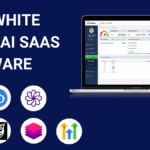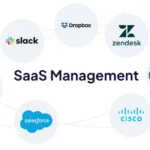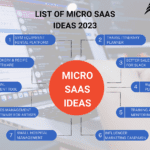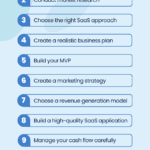Micro SaaS is a small-scale software-as-a-service business. It targets niche markets with specific, focused solutions.
Micro SaaS businesses often operate with minimal staff, sometimes just one person. They solve highly specific problems for niche audiences, making them efficient and manageable. These businesses typically have low overheads and can be launched quickly. They benefit from a recurring revenue model, offering stability and predictability.
Entrepreneurs can leverage existing platforms to develop and distribute their Micro SaaS products. This approach allows them to reach a targeted customer base without massive marketing budgets. Micro SaaS is ideal for those looking to provide specialized software solutions while maintaining flexibility and control over their business operations.

Credit: geomotiv.com
The Emergence Of Micro Saas
The digital landscape is ever-evolving. Micro SaaS represents a new wave. These small, specialized software solutions meet niche needs. They offer robust solutions with minimal overhead. Startups and solopreneurs are quickly adopting this model.
Origins Of The Concept
Micro SaaS began as an offshoot of traditional SaaS. Entrepreneurs saw the potential in focusing on specific problems. Instead of broad solutions, Micro SaaS targets niche markets. These solutions often require less capital to start. They can be managed by small teams or even individuals.
Characteristics Of Micro Saas
Micro SaaS solutions have distinct traits. They usually target a specific customer need. These solutions often integrate with existing platforms. Here are some key characteristics:
- Niche Focus: They solve specific problems for a small audience.
- Low Overhead: Often run by small teams or solo founders.
- Integration: Work well with existing software ecosystems.
- Scalability: Can grow with the user base over time.
Many Micro SaaS businesses operate with minimal marketing. They rely on word-of-mouth and community support. This makes them cost-effective and sustainable.

Credit: www.booknetic.com
Decoding Micro Saas
Micro SaaS is a growing trend in the software industry. It offers niche solutions with high value. Decoding Micro SaaS helps understand its unique benefits and scope.
Definition And Scope
Micro SaaS stands for Micro Software as a Service. It is a small-scale SaaS business. These businesses focus on niche markets. They provide specialized solutions.
Micro SaaS businesses are usually run by small teams. Often, a single person manages everything. This includes development, marketing, and support.
The scope of Micro SaaS is narrow but deep. It aims at solving very specific problems. This makes it highly efficient and targeted.
How It Differs From Traditional Saas
Traditional SaaS solutions are broad. They aim to solve a wide range of problems. Micro SaaS, on the other hand, focuses on a single issue.
Traditional SaaS requires large teams. Micro SaaS can be managed by one or two people. This makes it lean and agile.
Here is a comparison table:
| Aspect | Traditional SaaS | Micro SaaS |
|---|---|---|
| Scope | Wide | Narrow |
| Team Size | Large | Small or Single |
| Focus | General | Specific |
Micro SaaS typically has lower costs. Operating expenses are minimal. This leads to higher profit margins.
Micro SaaS products are easy to maintain. Updates are quicker. Customer feedback is directly integrated.
In essence, Micro SaaS is lean, focused, and efficient. It targets niche markets with precision.
Core Advantages
Micro SaaS offers numerous advantages for small businesses and entrepreneurs. These core benefits make Micro SaaS a viable choice for many. Below, we explore the key advantages.
Cost-effectiveness
Micro SaaS platforms are often more affordable than traditional SaaS. They require lower initial investments. This is due to smaller scale and fewer resources needed.
Since operations are lean, ongoing costs are minimized. This helps in maintaining a healthy budget. Small teams can handle Micro SaaS effectively, reducing labor expenses.
Agility And Flexibility
Micro SaaS companies can pivot quickly. They adapt to market changes faster than larger SaaS companies. This agility allows for quicker updates and feature releases.
Flexibility in Micro SaaS means customization is easier. Developers can tailor solutions to specific needs. This makes Micro SaaS highly user-centric.
Success Stories
Exploring the world of Micro SaaS, you will find many success stories. These stories highlight how small software solutions can create big impacts. Below, we'll dive into some inspiring examples.
Case Studies
One of the most famous Micro SaaS success stories is Buffer. Buffer started as a simple tool for scheduling social media posts. Today, it has millions of users and has grown into a comprehensive social media management platform.
Another example is Baremetrics. Baremetrics provides analytics for Stripe users. It started as a side project but now supports thousands of businesses.
| Company | Product | Users |
|---|---|---|
| Buffer | Social Media Scheduler | Millions |
| Baremetrics | Stripe Analytics | Thousands |
Entrepreneurial Journeys
Many entrepreneurs start their Micro SaaS journey with a simple idea. Joel Gascoigne, the founder of Buffer, started by solving his own social media problems. He built a simple MVP, tested it, and saw potential.
Another inspiring journey is that of Josh Pigford, the founder of Baremetrics. He realized the need for better analytics tools for Stripe. He built Baremetrics to fill this gap, starting small and growing it step-by-step.
- Joel Gascoigne – Buffer
- Josh Pigford – Baremetrics
These stories show that anyone can succeed in the Micro SaaS space. All it takes is a good idea and determination.
Building A Micro Saas Business
Building a Micro SaaS business is an exciting opportunity for entrepreneurs. It involves creating small, niche Software as a Service (SaaS) products. These products address specific problems for targeted audiences. Let's explore the key steps in building a Micro SaaS business.
Identifying A Niche
The first step is to identify a unique niche. This should be an area with specific problems that need solving. Consider industries where you have expertise or interest. Here are some tips:
- Look for underserved markets.
- Find pain points in your everyday life.
- Research forums and social media groups.
Finding the right niche ensures there is demand for your product. It also helps you tailor your solution to meet specific needs.
Minimum Viable Product Development
Developing a Minimum Viable Product (MVP) is the next crucial step. An MVP is a basic version of your product. It includes only the essential features needed to solve the core problem. This allows you to:
- Test your idea quickly.
- Gather user feedback.
- Iterate and improve based on real data.
Focus on building a simple, functional product. Avoid adding extra features initially. This helps you launch faster and reduce development costs.
Here's a table to summarize the key points:
| Step | Action | Purpose |
|---|---|---|
| 1. Identifying a Niche | Research and select a specific market | Ensure demand for your product |
| 2. MVP Development | Build a basic version of your product | Test ideas and gather feedback |
By following these steps, you can build a successful Micro SaaS business. Focus on solving specific problems and delivering value to your users.
Challenges And Solutions
Running a Micro SaaS business comes with its own set of challenges. These challenges can be daunting but are manageable with the right strategies. This section delves into some common challenges and offers practical solutions.
Scaling Issues
Micro SaaS companies often face scaling issues. Limited resources can make growth difficult. Here's a table summarizing common scaling challenges and their solutions:
| Challenge | Solution |
|---|---|
| Server Load | Use cloud services like AWS or Google Cloud. |
| Customer Support | Automate with chatbots and FAQs. |
| Feature Updates | Prioritize user feedback for updates. |
Customer Acquisition Strategies
Attracting customers is crucial for any Micro SaaS. Effective customer acquisition strategies can make or break your business. Here are some proven strategies:
- Content Marketing: Create valuable content related to your niche.
- Email Campaigns: Use personalized emails to engage potential customers.
- Social Media: Leverage platforms like Twitter and LinkedIn.
- Referral Programs: Encourage existing users to refer others.
By implementing these strategies, you can effectively attract and retain customers.
The Role Of Community
The success of a Micro SaaS business often depends on its community. The community can help in many ways. This section explores how community plays a vital role. We will look at building user trust and leveraging feedback.
Building User Trust
Trust is important for any business, especially for Micro SaaS. A strong community can help build trust. Here are a few ways:
- Reviews and Testimonials: Positive reviews can attract new users.
- Word of Mouth: Happy users tell others about your service.
- Active Forums: A place where users can discuss and help each other.
- Social Proof: Showcasing how others use and benefit from your product.
These factors make new users feel safe and confident in your Micro SaaS product.
Leveraging Feedback
Feedback from the community is a goldmine. It helps improve your Micro SaaS product. Here are a few ways to leverage feedback:
- Surveys: Ask your users what they need and want.
- Beta Testing: Let users test new features before the full release.
- Support Channels: Use support tickets to identify common issues.
- Social Media: Monitor social media for user comments and suggestions.
Using feedback helps you create a product that users love. It also makes users feel valued and heard.
Predicting The Future
The world of Micro SaaS is evolving rapidly. Keeping an eye on future trends is crucial. Understanding how Micro SaaS will shape the future can help businesses stay ahead. Let's dive into some key predictions and their impact.
Trends And Predictions
Micro SaaS platforms are becoming more specialized. This trend will continue. Businesses will seek solutions for niche markets. Expect to see more tailored products.
Another trend is the rise of AI and automation. Micro SaaS tools will increasingly incorporate these technologies. They will offer smarter, more efficient services.
Subscription models will remain popular. These models provide steady revenue. Customers also prefer the flexibility they offer.
Impact On The Larger Saas Ecosystem
Micro SaaS will greatly influence the larger SaaS ecosystem. Here's how:
- Increased competition: More niche players will enter the market.
- Innovation boost: Small companies can innovate faster.
- Customer focus: Solutions will be more customer-centric.
Large SaaS providers will adapt. They may acquire Micro SaaS companies. This helps them stay relevant and competitive.
Overall, the rise of Micro SaaS will lead to a more dynamic SaaS ecosystem. Businesses must stay alert and adapt to these changes.
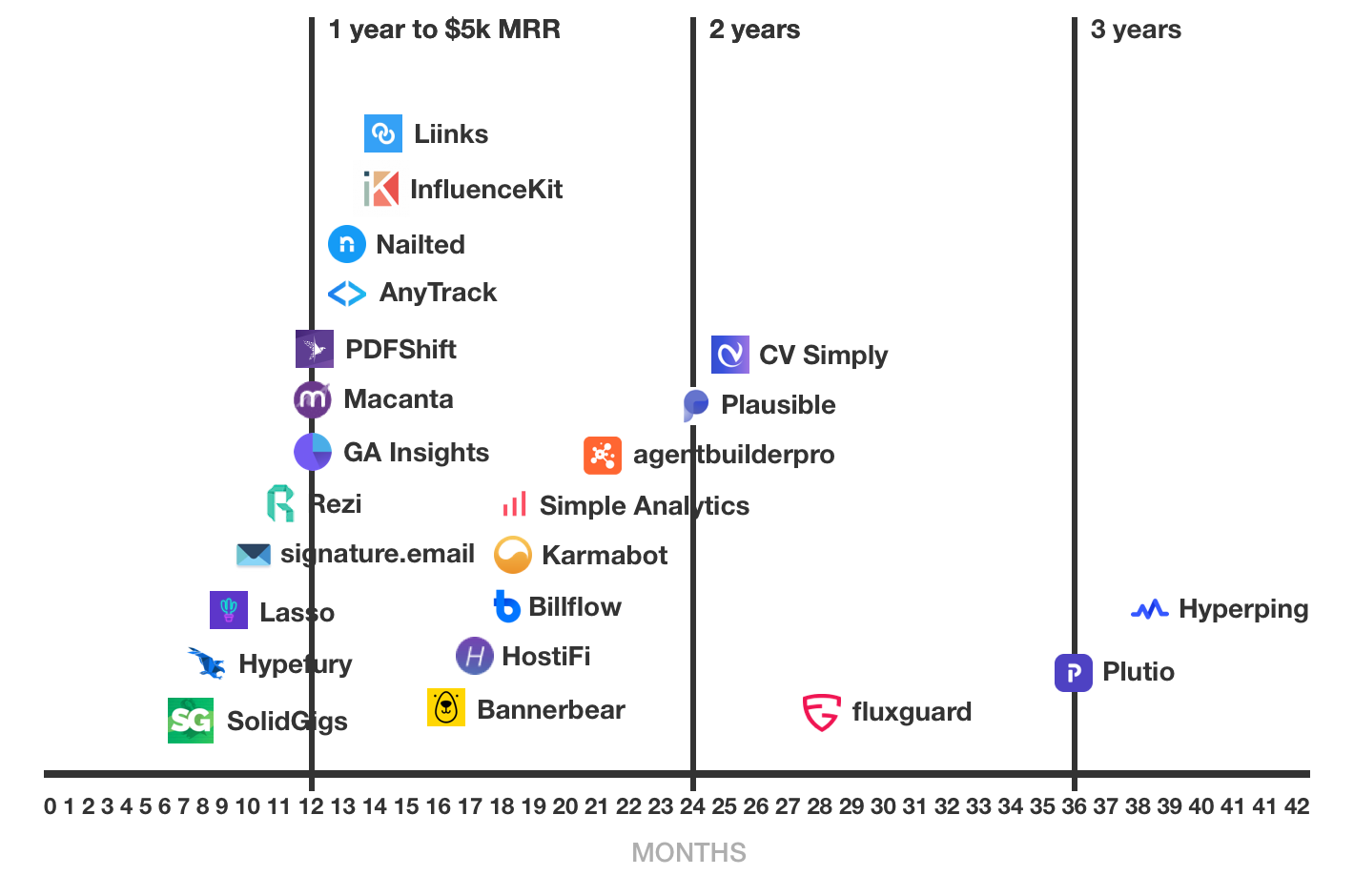
Credit: microfounder.com
Frequently Asked Questions
What Is The Micro Saas?
Micro SaaS refers to small-scale Software-as-a-Service businesses targeting niche markets. They typically have minimal overhead and focus on specific problems.
Can You Make Money With Micro Saas?
Yes, you can make money with micro SaaS. Focus on niche markets, solve specific problems, and offer subscription-based services. Optimize for SEO and provide excellent customer support to retain users.
How Do I Create A Micro Saas Product?
Identify a niche problem. Validate the idea with potential users. Develop a minimal viable product (MVP). Launch and gather feedback. Iterate and improve based on user input.
What Language Is Used In Micro Saas?
Micro SaaS commonly uses languages like JavaScript, Python, and Ruby. These languages support rapid development and scalability.
Conclusion
Micro SaaS offers unique opportunities for entrepreneurs to solve niche problems. With lower costs and focused markets, it's a promising model. By targeting specific needs, Micro SaaS businesses can thrive. Stay innovative and customer-focused to succeed in this growing field.
Explore Micro SaaS today and carve your niche in the tech world.



